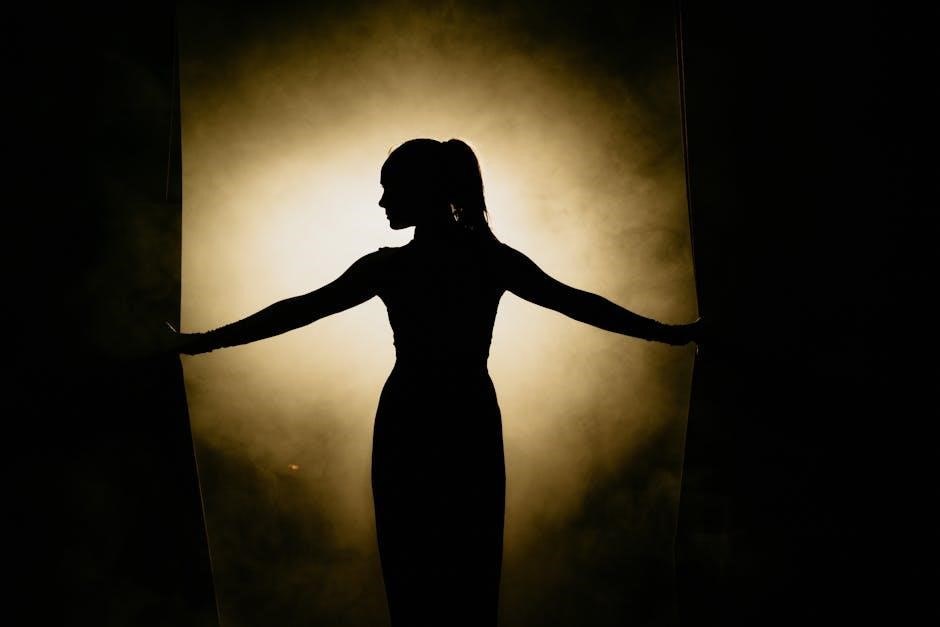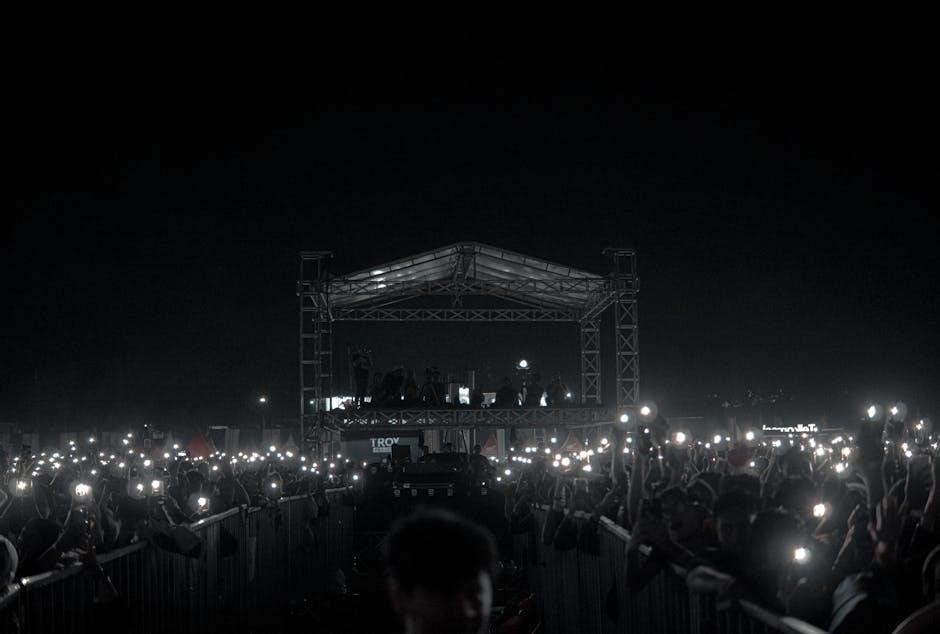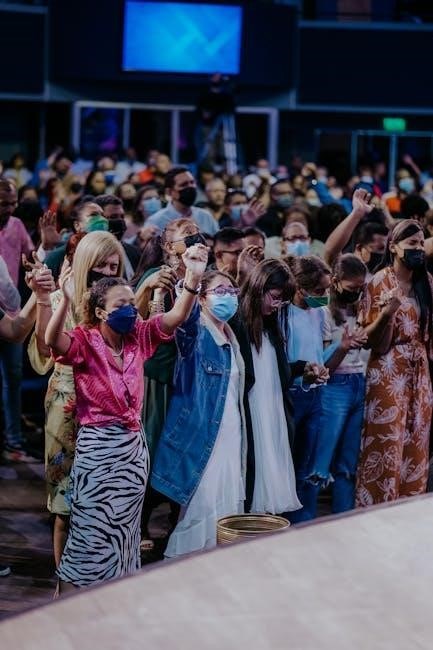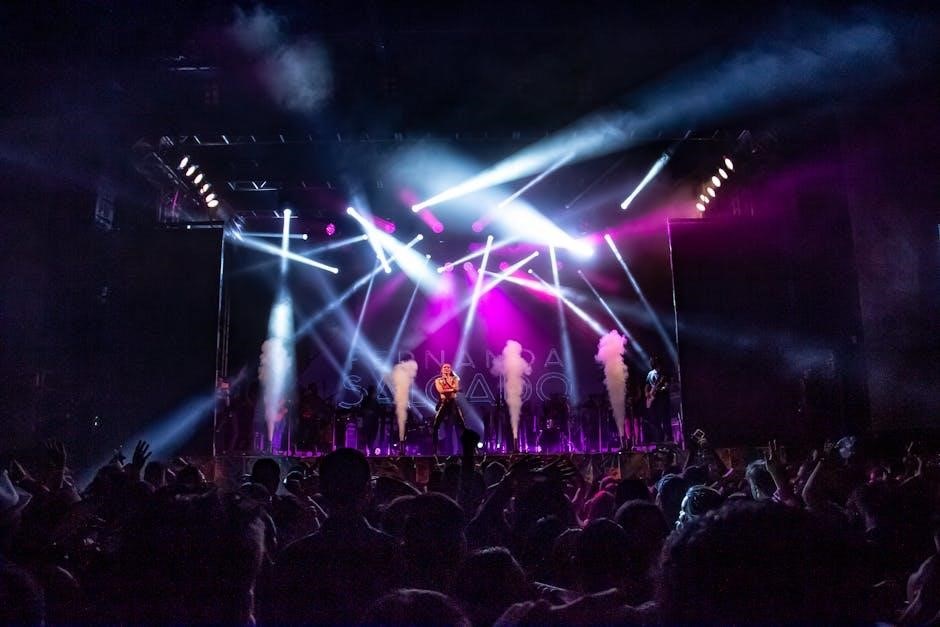Overview of Rocky Horror Picture Show Audience Participation
The Rocky Horror Picture Show is a cult classic renowned for its audience participation. This involves callbacks, props, and dressing up;
Scripts guide the audience with lines and actions, fostering a unique, interactive viewing. It’s more than a film; it’s an event!
The Cult Phenomenon of Audience Participation
The Rocky Horror Picture Show’s audience participation has evolved into a distinct cult phenomenon, transforming passive viewing into an active, shared experience. Screenings become lively events where viewers actively engage with the film through call-backs, prop usage, and costume. This interactive element is central to the film’s enduring appeal, turning each showing into a unique performance. The practice dates back to the film’s early screenings, spontaneously arising from audience reactions and eventually solidifying into established traditions. These traditions are passed down through generations of fans, creating a sense of community and shared identity centered around the film. The audience participation aspect distinguishes Rocky Horror from other films, blurring the lines between spectator and performer. This creates an immersive and unforgettable experience that keeps audiences returning time and time again, solidifying its status as a cult classic. The film’s themes of rebellion, self-expression, and acceptance resonate with audiences. Furthermore, the audience participation provides a safe and inclusive space for individuals to express themselves freely and connect with others who share their passion for the film.
Key Elements of an Audience Participation Script
An audience participation script for Rocky Horror includes call-backs, actions, and prop cues. It enhances the interactive experience.
The script guides the audience, ensuring cohesive engagement.
Call Backs and Responses
Call backs in The Rocky Horror Picture Show are essential to audience participation, offering a unique and interactive viewing experience. These are shouted lines in response to on-screen dialogue or action, creating a dialogue between the film and the audience.
Scripts provide these call backs, which often evolve over time, reflecting current pop culture while retaining classic lines. They are fluid and analog, varying slightly from theater to theater.
Understanding call backs can be challenging without experiencing them. Local cast members or online forums are useful resources for learning the specific call backs used in different venues.
The goal is to enhance the film with humor and engagement, making each screening a unique event. Call backs transform a passive viewing into an active, participatory experience. These responses are a core component, creating a shared sense of community.
Knowing when and what to shout elevates the experience, turning viewers into performers. Audience members become integral to the show, creating a dynamic and lively atmosphere.

Examples of Audience Participation Lines
Audience participation lines enhance the Rocky Horror Picture Show experience. These scripted shouts add humor and interaction to the film.
They target characters and scenes, creating a lively, engaging atmosphere for all attendees.
Character-Based Shouts: Brad and Janet
Specific audience shouts often target Brad and Janet, the naive protagonists. These lines, though sometimes cheeky, are a traditional part of the Rocky Horror Picture Show experience.
When Brad appears or is mentioned, it’s common to shout “Asshole!” This playful insult adds to the comedic and interactive nature of the screening. Similarly, when Janet is introduced or on screen, the audience typically yells “Slut!” These callbacks are not meant to be genuinely offensive but rather are ingrained in the film’s participatory culture.
The contrasting shouts highlight the characters’ perceived innocence and eventual transformation throughout the film. It’s a way for the audience to connect with the story and express their amusement. While these shouts have been staples for years, some modern interpretations may offer updated or alternative lines to reflect contemporary sensibilities. Regardless, the intention remains the same: to engage with the film in a fun and spirited manner, creating a shared experience for all attendees.

Prop Usage in Audience Participation
Props enhance the interactive experience of the Rocky Horror Picture Show. They allow the audience to physically engage with the film, creating a lively atmosphere.
Accepted Prop Lists
Each venue typically has a list of approved props to ensure safety and minimize mess. Common items include:
- Rice: Thrown during the wedding scene.
- Newspaper: Brad and Janet cover their heads.
- Water pistol: For rain scenes.
- Flashlight: During “Over at the Frankenstein Place.”
- Rubber gloves: Like Frank’s!
- Noisemakers: At the creation of Rocky.
- Toilet paper: When Dr. Scott enters.
- Toast: Thrown during dinner.
- Bell: During “Planet Schmanet.”
- Cards: For the song “I’m Going Home.”
Check with your local theater for their specific rules to avoid any issues. Some venues may prohibit certain items, so be sure to check before you go! Remember, it’s all about having fun while respecting the theater and fellow fans. This ensures everyone has a great experience during the show.
Enjoy the show!

Evolution and Adaptation of Scripts
Rocky Horror scripts evolve! Callbacks adapt with pop culture. New lines emerge, blending classic tradition with modern references.
Scripts stay fresh and relevant.
Modern Updates and Topical References
The beauty of The Rocky Horror Picture Show‘s audience participation lies in its constant evolution. While classic callbacks remain cherished traditions, modern updates and topical references are crucial for keeping the experience fresh and engaging for contemporary audiences. These additions often draw from current pop culture, political events, and social trends, injecting humor and relevance into the interactive performance. Think lines referencing viral memes, trending news stories, or popular celebrities. This ensures that each screening feels unique and connected to the present moment. The key is to strike a balance between honoring the established script and incorporating new elements that resonate with today’s viewers. Seasoned attendees and “Rocky Virgins” alike can appreciate the familiar comfort of the original callbacks while also enjoying the surprise and wit of the updated material. This adaptability is what allows The Rocky Horror Picture Show to continue thriving as a beloved cult phenomenon, generation after generation. By staying current and reflecting the world around us, the audience participation script ensures that the show remains a vibrant and dynamic experience for all.

Resources for Audience Participation Scripts
Finding Rocky Horror scripts is easy! Online repositories offer a variety. Fans share updated lines and callback ideas. Connect with local casts, too!
Online Script Repositories
Several online resources host Rocky Horror Picture Show audience participation scripts. These repositories are great for finding a base script to start from, and some even offer variations that reflect local traditions or updated jokes.
Websites like “Mortal Journey” and fan-maintained wikis often have downloadable scripts in formats such as .txt or .pdf. Subreddits dedicated to The Rocky Horror Picture Show may also contain links to scripts or discussions about specific callbacks.
Remember that scripts may vary, and local shadow casts may have their own preferred versions, so it’s a good idea to cross-reference and adapt the script to your specific viewing context. Some repositories encourage user contributions, allowing for a collaborative evolution of the scripts over time.
When searching online, use keywords like “Rocky Horror Picture Show audience participation script,” “RHPS callback script,” or “Rocky Horror shadow cast script” to find relevant resources. Always be mindful of copyright issues and respect the original authors’ work. Many scripts are shared freely for non-commercial use, but it’s essential to check the terms of use before distributing or adapting them.
